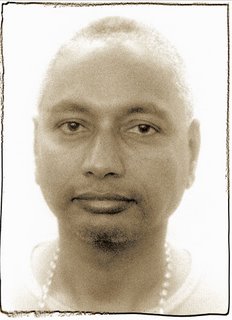deeply moving in
my form is light
the body and its structures
placed carefully in asana
moved by the breath
my tratakam gaze
pulling me in in
I visualise my temple heart
and in it
ganesha ganesha always ganesha
just read a bit by Venkatesananda about the Gerandha Samhita and the three types of meditation- Sthula dhyana, Jyoti dhyana and Shuksma dhyana
moving from more complex forms of visualisation to more subtle
Here is what he says:
"Even so, sthula-dhyana has its place in the scheme of yoga. If the mind is not subtle (being gross and body-conscious), it will not be capable of entering into the subtle regions of contemplation that has often compared to jumping on one's own shoulders. However great an acrobat you may be, a body-conscious, unsubtle mind will not be capable of jumping on its own shoulders. The yogis, realizing this, suggest that it is most advantageous to realize what stage of development one is at, so that one can adapt one's meditation to that stage of development. If all one knows of oneself is "I am the body, gross, physical, material," then it is suggested that this special materialistic approach towards truth called sthula-dhyana be used.
Even should one realize that the earth is extremely subtle, and not what it appears to be through the gross instrument of the human eye, that it is also a mass dancing electrons, subtle, as energy is subtle, if in one's present state of development the earth is seen as solid, let the contemplation of the divine, of the supreme spirit, also be of something solid. There is no harm in proceeding with this, unless, of course, you start insisting that everyone else must do the same, or worse, use it as a stick to beat everyone else into submission:
"The book says to see the ocean! It's prescribed in THE BOOK! Poor man, not to have seen the ocean!"
It is totally inappropriate to force one's own visualization upon someone else. Each must find their own type of visualization. It's not even a question of remaining within the boundaries of one culture verses another. Even within what you think of as your own culture, there are thousands of variations. Some devotees may visualize a crucifix, while others don't even like the symbol of the cross. Some devotees may prefer to visualize a human form. Others would never dream of using a human figure in a visualization of the Divine. Each will have to find his or her own inner predisposition. The only principal that applies to all is the underlying reason for performing this type of meditation: I am body-conscious at present, and therefore, I need a physical symbol upon which the mind can rest, and focus."

Photo of a young swami Venkatesananda by Alan Finger


No comments:
Post a Comment